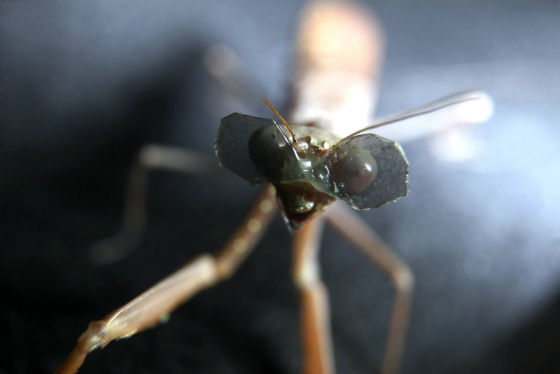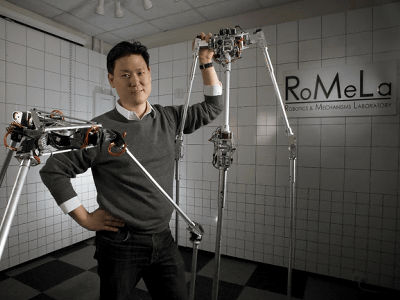Survey the difference in recognition ability with humans by attaching the world's smallest 3D eyeglasses to the mantis

Mantis recognizes figures by collecting individual eyes with several lensesCompound eyesDoes the brain process the recognized three-dimensional object like a human being? In order to investigate the fact that there is a project to investigate the movements of the brain by putting the world's smallest 3D eyeglasses on the mantis.
Testing 3D vision in praying mantises - Press Office - Newcastle University
http://www.ncl.ac.uk/press.office/press.release/item/testing-3d-vision-in-praying-mantises

Man, Mantis and Machine | Facebook
https://www.facebook.com/media/set/?set=a.732870346765886.1073741840.139577716095155

The state of performing experiments with mantis with the world's smallest 3D glasses can be confirmed from the following movie.
Computation Of 3D Vision In Praying Mantises - YouTube
This is a mantis that was used for the experiment. Apart from the time when the experiment is carried out it is raised in the insect room with the 3D glasses removed.

Looking at the world's smallest 3D glasses from the front look like this. Since 3D glasses are fixed with beeswax, they can be removed.

up.

In the experiments put the eyeglasses mantis in front of the computer screen ......

Move the preview video on the screen.

From the side it looks like this.

The state seen from above.

I pointed my head and head towards moving target.

This is in the UKUniversity of NewcastleofJenny ReedResearch by a team led by Dr.. The goal is to evolve 3D recognition and depth perception of computers and robots by clarifying how the mantis recognizes the object in three dimensions.

"The brains of the mantis are small, but they have complex vision and catch the prey with horrible efficiency. By studying whether the mantis perceives the world, we can learn a lot "Dr. Reed. "Exercising 3D eyeglasses on mantis and letting you see the image" is an experiment on whether the brains of insects with compound eyes such as mantis and others can recognize objects that move in the same process as vertebrate animals with monocells such as humans and monkeys What was done to judge. When a human wears 3D glasses and watches a movie, the image looks stereoscopic, but when I tried the same method on a mantis, I realized that mantis can capture 2D video as 3 dimensional.

I am participating in the researchUniversity of NewcastleDr. Vivek Nityananda of the Neuroscience Laboratory says, "This is a very rewarding project, I have not concluded yet, but if mantis is processing 3D vision in a different way from human beings, There is the possibility of making an algorithm that is simpler than 3D programming being used. "

Related Posts:
in Science, Posted by darkhorse_log







